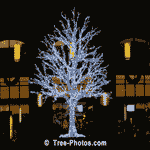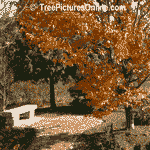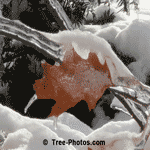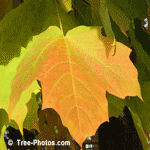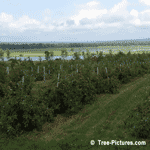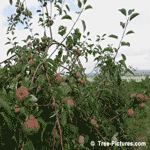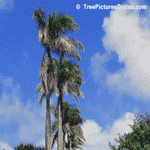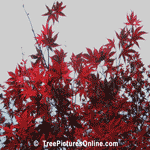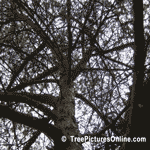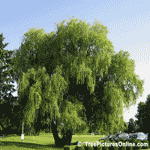Mango Trees
Mango Tree Welcome
In the Mango Tree Photo Gallery you will find lots of nice pictures of mango trees.
You will find a lot of wonderful facts on mango trees, including info about the mango tree species, fruit, identification, planting information, and much more.
This is valuable and useful information that can help you to learn more about the mango tree.
Tree Galleries listed on the left give you facts about that specific tree type and lots of great pictures of that tree species.
Mango Trees Images
Full size each mango tree picture you like, just click on the mango tree photo to enlarge. Enjoy these pictures of Mango Trees.
Mango Tree, Images of Mango Trees
Mango Tree Scientific Name: Mangifera
Mango Tree Types; Different Types of Mango Trees
- Alphonso Mango Tree
- Ataulfo Mango Tree
- Common Mango Tree, Mangifera indica
- Edward Mango Tree
- Francis Mango Tree
- Haden Mango Tree
- Keitt Mango Tree
- Kent Mango Tree
- Kesar Mango Tree
- Manila Mango Tree
- Palmer Mango Tree
- Tommy Atkins Mango Tree
Mango Trees, Facts & Info on the Mango Tree Species
Here is some detailed information on the mango tree species.
Mango is a fruit which is indigenous to the Indian subcontinent, belonging to the genus Mangifera, consisting of numerous species of tropical fruiting trees in the flowering plant family Anacardiaceae. While other Mangifera species (e.g. horse mango, M. foetida) are also grown on a more localized basis, Mangifera indica, the common mango or Indian mango is the only mango tree commonly cultivated in many tropical and subtropical regions, and its fruit is distributed essentially world-wide.
In several cultures, its fruit and leaves are ritually used as floral decorations at weddings, public celebrations and religious ceremonies.
Mango trees (Mangifera indica L.) grow upto 35 to 40 m (115 to 130 ft) tall, with a crown radius of 10 m (33 ft). The mango tree is long-lived, as some specimens still fruit after 300 years. In deep soil, the taproot descends to a depth of 6 m (20 ft) and the profuse, wide-spreading feeder roots also send down many anchor roots, which penetrate several feet of soil. The leaves are evergreen, alternate, simple, 15 to 35 cm (5.9 to 14 in) long and 6 to 16 cm (2.4 to 6.3 in) broad; when the leaves are young they are orange-pink, rapidly changing to a dark glossy red, then dark green as they mature. The flowers are produced in terminal panicles 10 to 40 cm (3.9 to 16 in) long; each flower is small and white with five petals 5 to 10 mm (0.20 to 0.39 in) long, with a mild sweet odor suggestive of lily of the valley. The fruit takes three to six months to ripen.
The ripe fruit is variable in size and color. Cultivars are variously yellow, orange, red or green, and carry a single flat, oblong pit that can be fibrous or hairy on the surface, and which does not separate easily from the pulp. Ripe, unpeeled fruit gives off a distinctive resinous, sweet smell. Inside the pit 1 to 2 mm (0.039 to 0.079 in) thick is a thin lining covering a single seed, 4 to 7 mm (0.16 to 0.28 in) long. The seed contains the plant embryo.
Mangoes have been cultivated in the Indian subcontinent for thousands of years and reached East Asia between the 5th and 4th centuries BC. By the 10th century AD, cultivation had begun in East Africa. The 14th century Moroccan traveler, Ibn Battuta, reported it at Mogadishu. Cultivation came later to Brazil, the West Indies and Mexico, where an appropriate climate allows its growth.
Mango is now cultivated in most frost-free tropical and warmer subtropical climates; nearly half of the world's mangoes are cultivated in India alone.
Mango is also being grown in Andalusia, Spain (mainly in Malaga province), which is one of the few places in mainland Europe that allows growth of tropical plants and fruit trees. Many of the 1,000+ mango cultivars are easily cultivated using grafted saplings, ranging from the "turpentine mango" (named for its strong taste of turpentine, which according to the Oxford Companion to Food some varieties actually contain) to the huevos de toro ("eggs of the bull", a euphemism for "bull's testicles", referring to the shape and size).
Other cultivators include North, South and Central America, the Caribbean, south, west and central Africa, Australia, China, Pakistan, Bangladesh, and Southeast Asia.
Mango is generally sweet, although the taste and texture of the flesh varies across cultivars, some having a soft, pulpy texture similar to an overripe plum, while the flesh of others is firmer, like a cantaloupe or avocado, or may have a fibrous texture. For consumption of unripe, pickled or cooked fruit, the mango skin may be consumed comfortably, but has potential to cause contact dermatitis (above) of the lips, gingiva or tongue in susceptible people. In ripe fruits which are commonly eaten fresh, the skin may be thicker and bitter tasting, so is typically not eaten.
Mangoes are widely used in cuisine. Sour, unripe mangoes are used in chutneys, athanu, pickles, or side dishes, or may be eaten raw with salt, chili, or soy sauce. A cooling summer drink called panna or panha comes from mangoes.
Ripe mangoes are typically eaten fresh; however, they can have many other culinary uses. Mango Lassi, a popular drink made throughout South Asia, is created by mixing ripe mangoes or mango pulp with yogurt and sugar. Ripe mangoes are also used to make curries. Aamras is a popular pulp/thick juice made of mangoes with sugar or milk, and is consumed with bread.
The mango is the national fruit of India, Pakistan, and the Philippines. The mango tree is the national tree of Bangladesh.
In Hinduism, the perfectly ripe mango is often held by Lord Ganesha as a symbol of attainment, regarding the devotees potential perfection. Mango blossoms are also used in the worship of the goddess Saraswati.
Mangoes account for approximately half of all tropical fruits produced worldwide.
Mangos are distantly related to the cashew and pistachio.
If you want to grow mangoes yourself it is important to note that you will need two trees for pollination
Thank you for visiting our Mango Tree Pictures at Tree Pictures Online.com, please come back soon for more great tree pictures!
Impressive Tree Pictures
Collection of Impressive Tree Images
Trees: Recent Tree Photos, Pics & Images |
||
Palm Tree Pictures |
Beech Trees |
Palm Trees |
Oak Tree Gallery |
Christmas Trees |
Maple Trees |
Apple Tree Photo Gallery |
Apple Tree Images |
Palm Trees Gallery |
Japanese Maple Trees |
Pine Tree Gallery |
Willow Trees Category |
Tree Facts, Trivia
United States land is covered by over 30 per cent with trees and forests
Tree wallpaper images can make beautiful backgrounds on your computer`s desktop. See our tree wallpaper photographs link in the left tree categories.
Thank you for visiting our Tree Pictures at TreePicture Online.com, please come back soon for more great tree photos!
Pictures Sites
Fireplace Pictures - Tree Pictures - Gazebo Pictures
Church Pictures
Fall Pictures
Manufactured Home Pictures
Log Siding
Shadow Puppets
Caribbean Islands
Play Touch Games
Pictures of Winter Shadow Puppet Pictures
Waterfall Pictures
Resume Samples
Make Hot Pictures Job Application Forms
![]()


